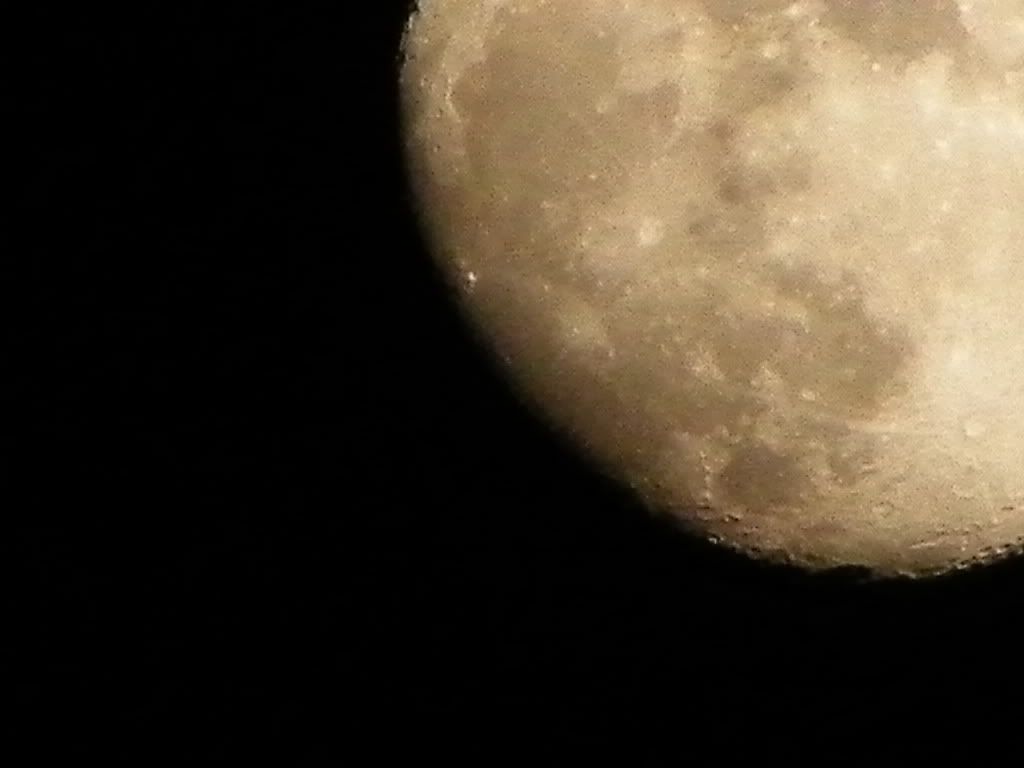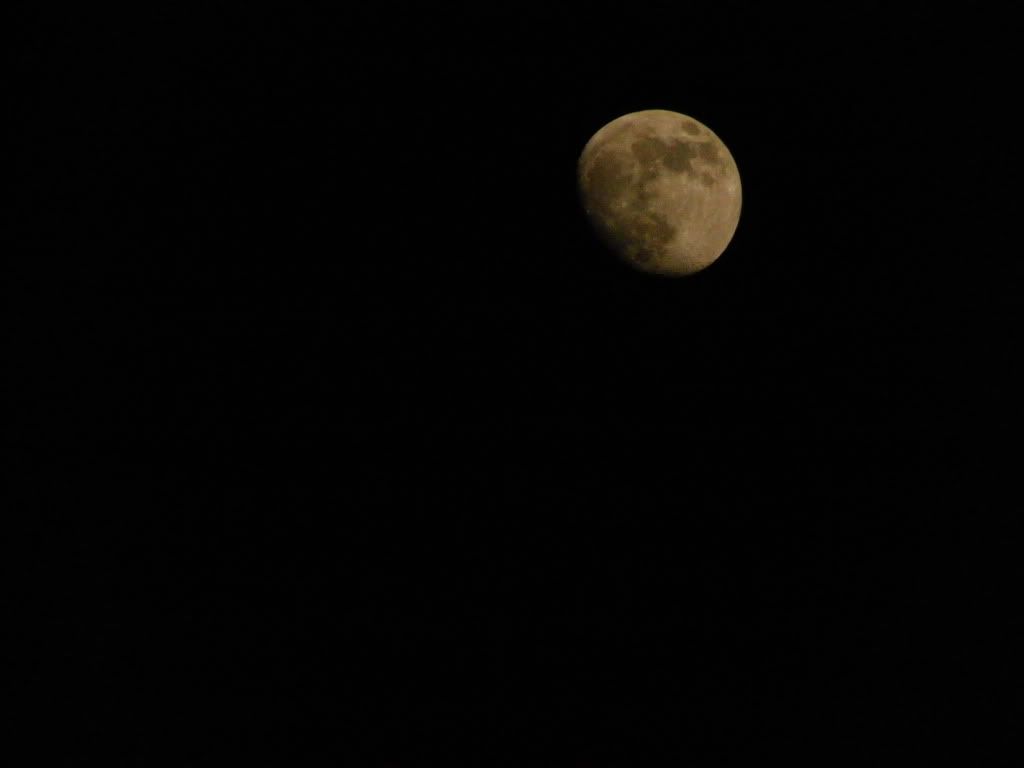Anyone do any astrophotography?
#51
JK Junkie
Join Date: Aug 2010
Location: Houston, Texas
Posts: 2,908
Likes: 0
Received 0 Likes
on
0 Posts
I've shot the moon a few times.
If you haven't already.. turn off all vibration reduction; Remove any filters; use manual focus; use manual exposure.. start around 1/160th @ f/7, ISO 200; Lock down on a tripod; Mirror lock up; cable release...
That seems to work okay for me... I also prefer to convert to B&W

If you haven't already.. turn off all vibration reduction; Remove any filters; use manual focus; use manual exposure.. start around 1/160th @ f/7, ISO 200; Lock down on a tripod; Mirror lock up; cable release...
That seems to work okay for me... I also prefer to convert to B&W


#52
JK Super Freak
If you leave it on auto exposure, you're most likely going to end up with the moon completely blown out. The meter will try to compensate for the massive amount of black sky and boost exposure to the point that the moon goes completely white with zero detail.
Filters are less critical.
Tripod, remote release and mirror lock-up are very important.
Most systems will go hay-wire if vibration reduction is left on while locked down on a tripod, so turn that off.
#53
JK Super Freak
If you leave it on auto exposure, you're most likely going to end up with the moon completely blown out. The meter will try to compensate for the massive amount of black sky and boost exposure to the point that the moon goes completely white with zero detail.
Filters are less critical.
Tripod, remote release and mirror lock-up are very important.
Most systems will go hay-wire if vibration reduction is left on while locked down on a tripod, so turn that off.
Filters are less critical.
Tripod, remote release and mirror lock-up are very important.
Most systems will go hay-wire if vibration reduction is left on while locked down on a tripod, so turn that off.
#54
JK Super Freak
Sure glad someone knew what to say to help out. I just got mine so I sure didn't know what to say. I have just been operating mine the way I would if it were film and that has worked out ok for me so far. Here is a shot I took of the moon before it got dark just using the telescopes objective as the lens.



Kidding...
If you add about a half stop of exposure to that picture; adjust the black point and tweak the contrast and clarity.. then sharpen just a bit.. it will probably look awesome!!
Keep up the good shooting.
#56
JK Enthusiast
Join Date: Sep 2007
Location: No where
Posts: 347
Likes: 0
Received 0 Likes
on
0 Posts
I bought the Orion starshoot iv last month and have been playing with it during the day to get a good handle on the camera, software, and how they work with my scope. Tried to snap a few pics of the moon tonight and I just couldn't get it to focus..... I ended up just using my built in 2x barlow and 9.7mm eye piece and took the pics with my phone. They came out alright all things considered. So I'm looking at the manual for the camera and It's saying to have an "effective focal ratio of f/20 or greater". My little meade etx80 is an f/5! (400/80=5). Do I really need a 4x barlow to be able to use this camera???? The scope has a built in 2x and i was just given an adjustable 2-3x edmond scientific barlow. Seems a little strange to have to use all that extra hardware. What about using focal reducers? Any ideas???? thanks ahead of time.
#57
JK Junkie
Join Date: Aug 2010
Location: Houston, Texas
Posts: 2,908
Likes: 0
Received 0 Likes
on
0 Posts
If you leave it on auto exposure, you're most likely going to end up with the moon completely blown out. The meter will try to compensate for the massive amount of black sky and boost exposure to the point that the moon goes completely white with zero detail.
Filters are less critical.
Tripod, remote release and mirror lock-up are very important.
Most systems will go hay-wire if vibration reduction is left on while locked down on a tripod, so turn that off.
Filters are less critical.
Tripod, remote release and mirror lock-up are very important.
Most systems will go hay-wire if vibration reduction is left on while locked down on a tripod, so turn that off.
#58
JK Super Freak
I bought the Orion starshoot iv last month and have been playing with it during the day to get a good handle on the camera, software, and how they work with my scope. Tried to snap a few pics of the moon tonight and I just couldn't get it to focus..... I ended up just using my built in 2x barlow and 9.7mm eye piece and took the pics with my phone. They came out alright all things considered. So I'm looking at the manual for the camera and It's saying to have an "effective focal ratio of f/20 or greater". My little meade etx80 is an f/5! (400/80=5). Do I really need a 4x barlow to be able to use this camera???? The scope has a built in 2x and i was just given an adjustable 2-3x edmond scientific barlow. Seems a little strange to have to use all that extra hardware. What about using focal reducers? Any ideas???? thanks ahead of time.
I recently bought the Orion StarShoot IV Imager. It is actually a fairly nice (and inexpensive) device for pulling color images straight into the PC. The installation - both physical and software - was a breeze. And aside from a couple of quirks in the image capturing software, it was quite easy to grab my first pics of the moon (see my separate post with a sample) and process the .avi file with RegiStax6 for a nice final output.
However... what was not at all clear from Orion (until I received the StarShoot IV) is that the effective eyepiece focal length of this imager is just 5mm! That sounds lovely...if you have the right telescope. But when coupled with my Orion 180mm Mak-Cass, it creates quite a "challenge":
Orion 180mm Mak-Cass = 2,700 focal length
StarShoot Imager IV = 5 mm eyepiece (equivalent)
Ergo: Magnification = 2,700/5 = 540x!
That is WAY beyond what is listed as the highest "useful magnification" of this telescope (and perhaps most small, ground-based telescopes). Even with a 2x Focal Reducer (which strangely, Orion tech support - who are normally very good - said would not work with the StarShoot IV, but does...), the effective magnification with this telescope is still 270x! And that's as low as I can go at this point.
That is still barely "useful", and really needs quite good conditions to produce a clean, sharp image. And you can forget about imaging something large like the moon or sun, unless you want to zoom in on a specific region or are handy with "stitching" software and want to assemble multiple images into one larger one.
I'm probably going to have to pull out my Meade ETX-90 and give it a go with this imager instead. At 1,250mm focal length and using the 2x focal reducer, at least I can get this combination down to 125x!))
I found this posted on astronomyforum.net and thought if might help. I have the neximage by celestron and it has the same specs. So I would say that you just have to move the focuser very slowly when getting close to focus and it is still real hard to tell when you have it right. What I usually do is focus on the moon to get it done and then move on to whatever planet I want to try and capture. All my pictures were made using the neximage until the last ones I put on here. Good luck and check out that site or another good one for imaging tips is cloudynights.com, I get on that one a lot and you can see some really great photos made by some people on there that look like something you would see in a magazine.
Last edited by genesbro; 11-08-2011 at 04:00 PM.
#59
JK Super Freak
I bought the Orion starshoot iv last month and have been playing with it during the day to get a good handle on the camera, software, and how they work with my scope. Tried to snap a few pics of the moon tonight and I just couldn't get it to focus..... I ended up just using my built in 2x barlow and 9.7mm eye piece and took the pics with my phone. They came out alright all things considered. So I'm looking at the manual for the camera and It's saying to have an "effective focal ratio of f/20 or greater". My little meade etx80 is an f/5! (400/80=5). Do I really need a 4x barlow to be able to use this camera???? The scope has a built in 2x and i was just given an adjustable 2-3x edmond scientific barlow. Seems a little strange to have to use all that extra hardware. What about using focal reducers? Any ideas???? thanks ahead of time.
Got a new one attached here now with a moon and its shadow on the planet.
Last edited by genesbro; 11-14-2011 at 09:03 PM.





